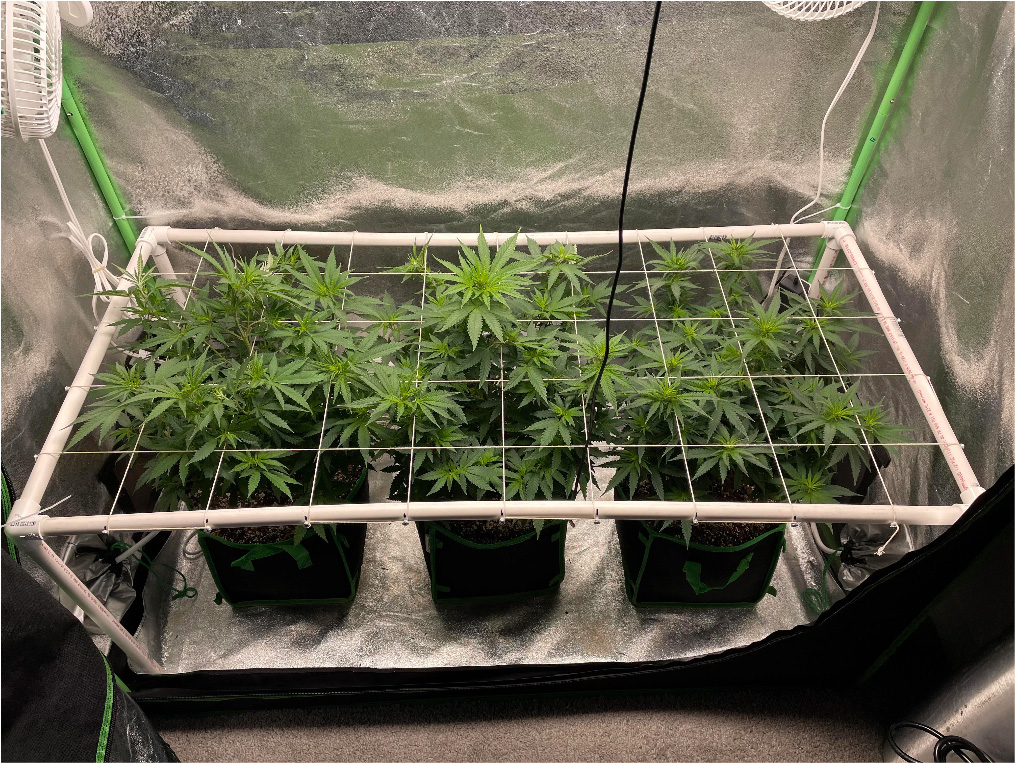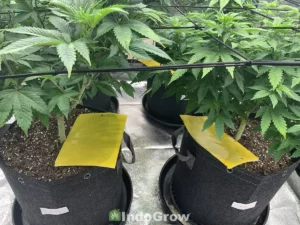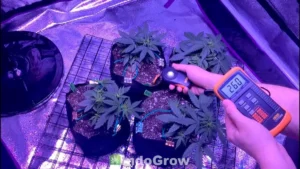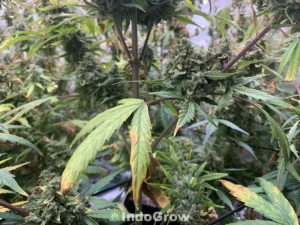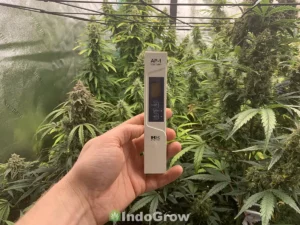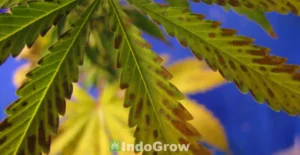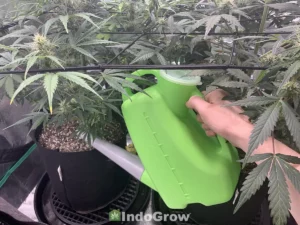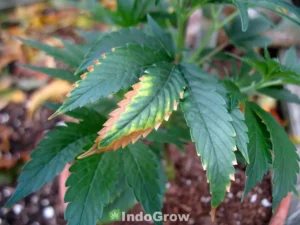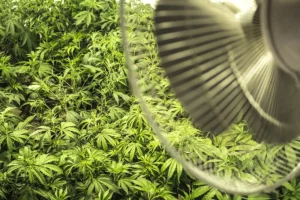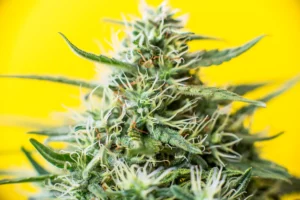A scrog grow or “scrogging” is a well known low stress training method that can transform your cannabis plant in just a few weeks. Scrogging creates a flat canopy, or “Screen of Green” that maximizes light exposure and ventilation. Plants grown using the scrog method will have more robust growth and larger, more potent buds at harvest time.
To begin scrogging you will only need a few supplies, like netting/ mesh screen, ties, and PVC pipe or a few 2 by 4s. The scrog method takes only about a month to transform your plant from apical dominance to a more efficient horizontal growth pattern. Read on to learn more about scrogging tips and techniques.
What is Scrogging?
Scrogging, which stands for Screen of Green, is a type of low stress training which involves growing the branches of a cannabis plant through a rigid net or screen. During a scrog grow, the branches are carefully manipulated through the holes in the screen to create an even canopy that maximizes light exposure and increases yield by up to 2-3 times that of an untrained plant.
Scrogging usually begins during the vegetative stage, when the screen is placed about a foot above the plant so that the branches can grow through it in the coming weeks. Some growers may wait until just before flowering, and push the screen down into the canopy. The branches may be tied down if they are heavier or more brittle, or simply allowed to lean against the screen as they grow.
Why is Scrogging Important?
Scrogging spreads out the cannabis plant’s branches, allowing for more efficient use of indoor lighting and other resources. This exposes more bud sites to the light, resulting in more colas at harvest time. On an untrained plant, branches in the lower canopy receive less light and produce smaller, lower quality buds.
The spacing of the branches and lack of leafy material near the roots also greatly increases airflow, which offers the plant some protection against mold or other diseases caused by moist, still air.
Finally, Scrogging makes the plant easier to work with. The branches are more symmetrical and spread out evenly, so each branch is easy to view and access. At harvest time, the buds will be nicely arranged above the screen and easy to harvest without waste.
Scrog Net vs Trellis Net
Trellis netting is often mistaken for scrog netting. While trellis netting generally has 4 inch squares and is very stretchy, Scrog netting should have 2 to 3 inch squares and be more rigid.
Scrog netting may be made of metal wire, rigid plastic, or rope. The exact material choice is unimportant as long as the hole size is correct, and the netting can support the weight of cannabis branches leaning against it without bowing or snapping.
Some brands make netting designed specifically for scrogging, which is a safe option if you are unsure what material would be best for your grow. Chicken/ poultry netting often has appropriately sized holes and is readily available at most hardware or farm supply stores.
For the greatest amount of control, you can make your own netting using materials like weed whipper wire, hemp cord, electrical wire, and more. Very thin strands such as fishing wire are not recommended as they can become tangled easily or cut into your plant’s stems as they grow.
Zip ties or other ties can be used to secure branches to the screen if they are not staying in place on their own, although they are not always necessary.
How to Scrog?
The basics of a scrog grow include building a screen structure, arranging the branches in the screen, and continuing to train the plant until the screen is full and the plant is actively flowering. Expect to spend approximately two weeks training the vegetative plant into the screen before inducing flowering, and another two weeks training the flowering plant before its growth slows and the scrog is complete.
After building a screen over the plant, the branches can be carefully manipulated into their respective squares. Longer branches should be pulled outward to occupy the furthest square that they can reach without slipping out. Then, work inwards until the central squares are filled by the shorter branches. If you are scrogging multiple cannabis plants, the outermost branches of the neighboring plants can be entwined to create a seamless screen.
Once the majority of branches have been trained through their individual squares, you can trim any small leaves and branches left under the screen. These branches will not receive sufficient light to produce quality flowers and will waste the plant’s energy.
How to Build a Scrog Net?
The easiest way to build a scrog net is to purchase a rigid net or screen and use zip ties to secure it to the corners of your grow tent. The screen must already be rigid since you won’t be able to tighten the individual strings or wires. You will need to trim the net or screen to fit your tent size and place the net 8-12 inches above your plants.
You can also build a frame that the net or wire is attached to and placed above your plants. Frames can be made of PVC pipe or wood. The frame can sit on legs of the same material or attached to the pot itself if using non-fabric pots.
For your netting, you will need an appropriate rigid net or screen with 2 to 3 inch squares, as well as ties to secure the screen to the frame. If you are making your own net, holes can be drilled in your pipe or wood frame to secure and tighten the individual wires.
Additional ties can be used to secure the branches to the net or screen for added security, although this is not always necessary. Once the net is in place, the ties should be checked and adjusted at least twice a week through about the third week of flowering to ensure that the branches grow in the desired direction and are not being pinched or otherwise damaged by the ties.
When to Start Scrogging?
Scrogging can begin when the plant is about 8-12 inches tall. The screen should initially be placed about a foot above the plant. For photoperiod/feminized strains, this is usually between weeks 4-8. To ensure that the plant has time to grow up to the screen, begin scrogging at least two weeks prior to inducing flowering.
Before scrogging can begin, the plants must be topped. This process involves pruning back the main stem and other branches of the plant back to a lower growth node. Topping causes the branch to split into two new branches, increasing the bushiness of the plant and encouraging more horizontal growth.
Some growers will wait to begin scrogging until the plant has reached the end of the vegetative phase. In this method, the screen is gently lowered into the plant, and the branches are each pulled through their own square until the screen is down to the desired height. Foliage below the screen is trimmed off, and the plant is then ready to move to flowering conditions. While this method is considered faster and more effective by some, it also carries a greater risk of accidentally snapping stems. For this reason, it is not recommended for those new to scrogging.
When to Stop Scrogging?
Scrogging can be stopped when the canopy has filled the screen or about two weeks into flowering, when the plant’s growth slows and pistils begin to appear. The branches will become more woody and brittle after this point, so additional manipulation is not recommended. Additionally, topping after flowers have begun to form will not increase the size of the plant, and will only stop one potential cola from developing.
Autoflower Scrog
Scrogging is mostly done with photoperiod/feminized strains, but it is possible to use some elements of the scrogging method with autoflowers as well. Since autoflowers have a relatively brief vegetative phase of only a few weeks, their potential training window is shorter.
Their branches can be trained through a screen, but will likely not fill out the entire thing. For this reason, you may instead choose to just tie the branches down to the side of the pot to encourage horizontal growth without having to set up an entire scrog system. Unlike photoperiod strains, autoflowers should never be topped. Their vegetative period is too short to recover from topping and the plant will likely end up stunted if it pruned back at any point.
Double Scrog
After scrogging, some growers will elect to add a second net to their plants during the flowering phase. A second net will support the flowers as they grow and encourage the plant to remain in the desired position. The height of the second scrog net should be about 3 feet above the first net.
For the second level of netting, you can use a standard trellis net with 4×4 inch flexible holes. Since the flowers need to fit through the holes without being damaged, it is best to avoid netting with small, inflexible squares for this stage.
Summary
The scrog, or screen of green, method is a low stress training technique used to grow cannabis plants with even, horizontal canopies. With a scrog grow, plants make efficient use of lighting and ventilation, and tend to produce a yield 2-3 times the size of untrained plants.
Before scrogging begins, the young plant is usually topped, or pruned back to growth nodes further down the branch. This process will create a bushier, more horizontal plant ideal for scrogging.
To begin scrogging, hang a net with rigid, 2 to 3 inch square holes about a foot above your vegetative cannabis plant. As the plant grows, its branches can be manipulated through the holes to eventually create an even canopy of horizontal branches. Any growth left beneath the screen can then be trimmed away to encourage further growth above the screen. Once the plant is a few weeks into the flowering phase and has set its flowers, the scrog is considered complete.

Rocky Horton
Author
Rocky Horton is an experienced cannabis grower and the founder of IndoGrow. The IndoGrow editorial team has over four decades of combined growing experience. Learn more.

